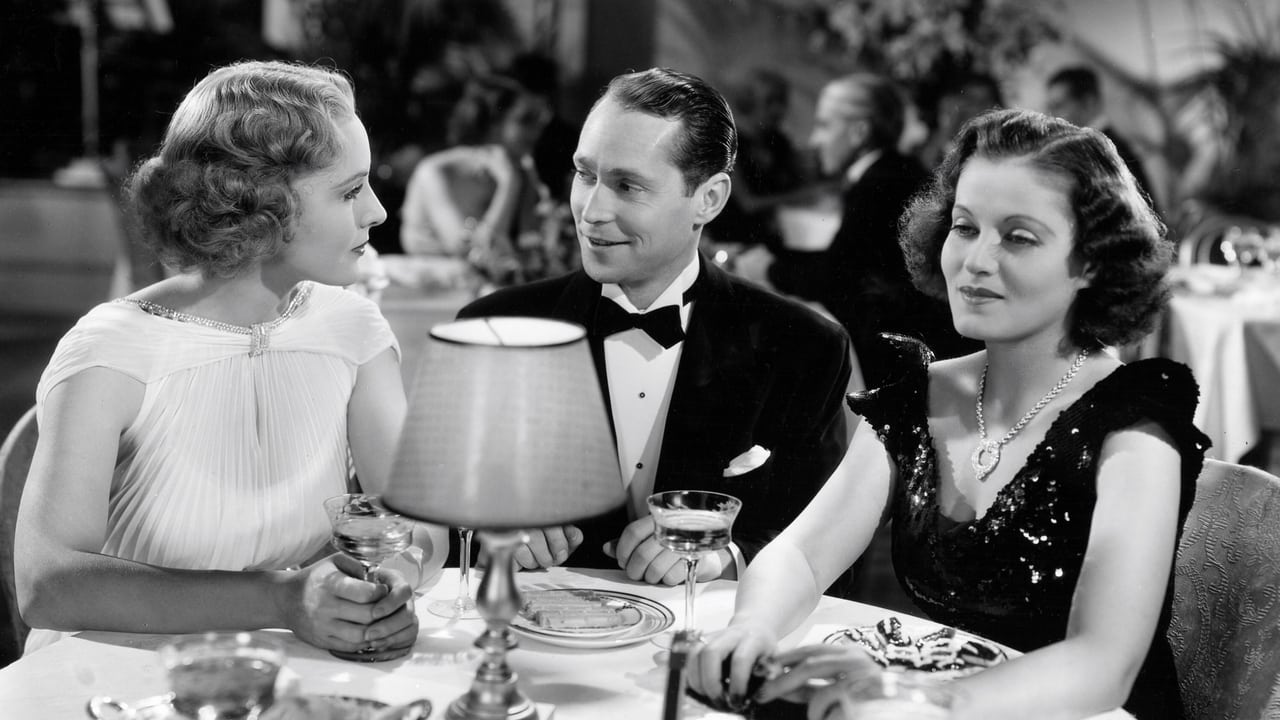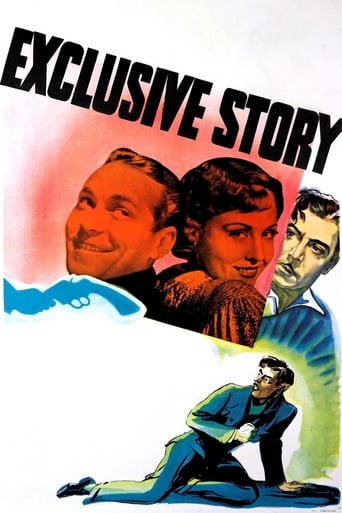

It's not great by any means, but it's a pretty good movie that didn't leave me filled with regret for investing time in it.
... View MoreIn truth, there is barely enough story here to make a film.
... View MoreI wanted to like it more than I actually did... But much of the humor totally escaped me and I walked out only mildly impressed.
... View MoreThe movie is made so realistic it has a lot of that WoW feeling at the right moments and never tooo over the top. the suspense is done so well and the emotion is felt. Very well put together with the music and all.
... View MoreThe ace production values suggest there should be longer runtime than 70- minutes. But it's MGM, The Tiffany of Studios, so whatever their Andy Hardy proclivities, nothing's done on the cheap. The first half had me wondering why Tone had top billing since he hardly puts in an appearance. Instead, it's third-billed Irwin who gets the screen time. He's all fast- talking, high-energy crime reporter eager to get the goods on a heartless numbers racket. But the kingpins are too tough and slimy to crack. So, uptown lawyer Tone is assigned to get the goods on them, that is, if he can sober up long enough. Thus, Tone gets the movie's second half. Meanwhile, second-billed Evans bridges the halves and wins audience sympathy with a nicely modulated turn as an aggrieved daughter. The movie's high point is likely the burning ocean liner, some of whose footage appears real life. (Thanks reviewer bkoganbing for the Morro Castle info.) Meanwhile, the medium shots on board the burning vessel are worthy of an A-production. I guess my only gripe is that we don't see more of one of the era's most intimidating actors, Robert Barrat. Here he's a kingpin but would have been better as an enforcer.All in all, nothing special here, just a good solid slice of thick-ear, with MGM pulling a Warner Bros. to good effect.
... View MoreDuring the 1930s, MGM gave even its "B" movies a touch of class and "Exclusive Story" is typical. Stu Erwin co-stars as a crusading newspaperman attempting to expose the racketeers behind a lottery scam, masterminded by Robert Barratt. He'd like society lawyer Franchot Tone to join him, serving as a special prosecutor. But Tone is having too much fun catering to his upscale clients. Then a mysterious fire aboard a ship bound out of Havana hits Tone personally -- and the mob has met its match. Over at RKO or Universal, this would have been a decent second feature. Here, while it's still a "B," it has style, sumptuous sets and first-rate performances.
... View MoreI'd like to revise my opinion of George B. Seitz. The same year that he brilliantly directed "Shadow of Doubt", he also made "Exclusive Story" which is almost equally entertaining. Once again, he had the services of a superb cast, this time headed by Franchot Tone, Stuart Erwin, Madge Evans, Joseph Calleia and Robert Barrat. This flick was produced on an extremely lavish budget by Lucien Hubbard who would deliberately write scenes that would expand that budget during production – such as the marvelous ship-on-fire footage. When supervisors complained about Hubbard's spendthrift ways to Louis B. Mayer, the studio chief almost always supported Hubbard – especially in this case in which he agreed that the spectacular footage written and supervised by Hubbard and masterfully directed by Seitz, had lifted a routine "B" offering into the "A" class. The movie was therefore released with a bit of fanfare and several critics even suggested that Calleia be nominated for a Best Supporting Actor award. But that of course didn't happen. Available on an excellent Warner Archive DVD.
... View MoreAlthough the plot of Exclusive Story revolves around a gangster story, the climax of the film was the fire at sea of an ocean liner on a return trip from Havana to New York. Two years earlier the famous Morro Castle disaster occurred and I believe MGM used some of the footage from that infamous tragedy.Weaving that into the plot, MGM fashioned a story about some gangsters now moving in on different rackets and in this case the numbers racket. Robert Barrat plays a Lucky Luciano type kingpin and Joseph Calleia his murderous chief enforcer. When they move in on grocer J. Farrell MacDonald thinking he's not selling enough chances his daughter goes to a crusading newspaper which has been trying to get evidence on Barrat and his gang. Later on J. Carrol Naish who is a Dutch Schultz type winds up murdered on MacDonald's doorstep.To cut to the chase reporter Stu Erwin gets his story, but also the counsel for the newspaper, Franchot Tone, gets appointed a Tom Dewey like special prosecutor. And together they start to move on Barrat and the rest. And to top it all off Tone and MacDonald's daughter Virginia Bruce get a nice little romance going.Even in a gangster film that would have been more a product of Warner Brothers than MGM, Louis B. Mayer just had to get Franchot Tone in white tie and tails. Tone is of course a society lawyer so a scene with formal wear was naturally worked into the plot for him.The action scenes were well done however and I doubt Tom Dewey ever thought of himself parachuting on to a burning ocean liner to personally save a witness. And Tone of course just came from a big society shindig as well.I doubt a lot of today's audience will get the significance of the people and events that the audience of 1936 did. Still the dating of the film does not in any way lessen the entertainment value.
... View More